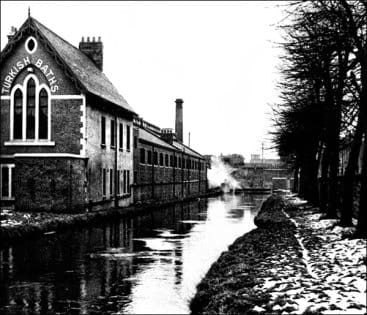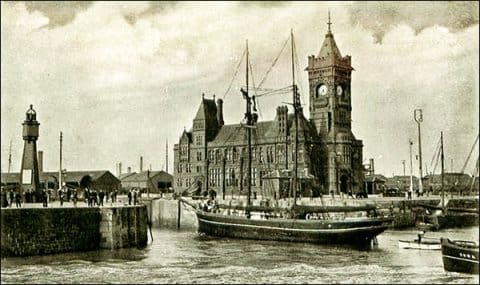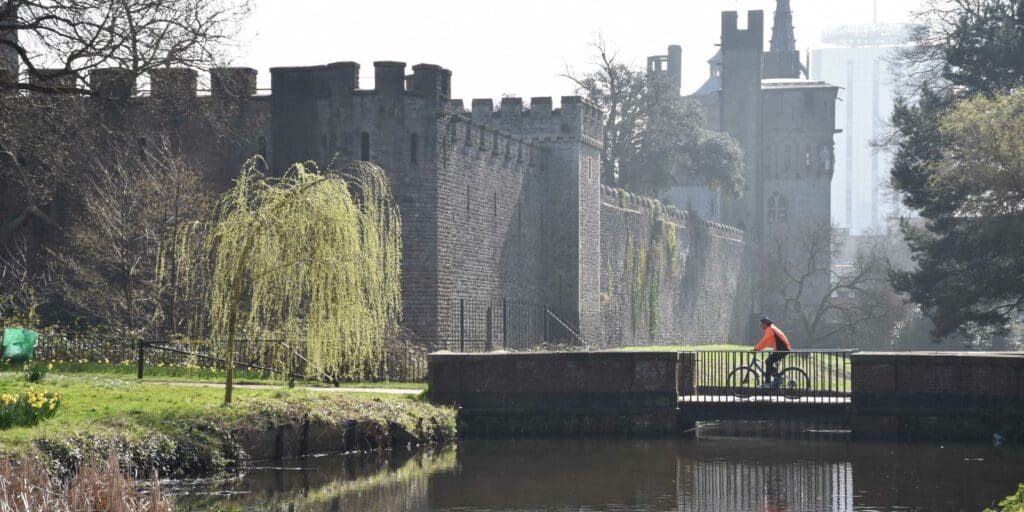Built in the 1830s, Cardiff’s Dock Feeder Canal entered a new phase in its history recently, when a section of the city waterway that had been hidden beneath Churchill Way in Cardiff city centre since 1948 was uncovered.
Now, QR codes which can be scanned by a smartphone to connect to information about the canal, have been placed along the entire route – from its source at Blackweir to the Pierhead in Cardiff Bay – to form a new ‘Cardiff Dock Feeder Canal Tour’ which makes the canal’s history even more accessible. The tour can also be followed virtually on the historypoints.org website.

(Image credit: Cardiff Libraries)
Cabinet Member for Culture, Parks and Events, Cllr Jennifer Burke, said: “The construction of the Dock Feeder Canal was integral to the coal-trade that fuelled much of Cardiff’s development and the recent re-opening on Churchill Way means it is also very much part of the city’s future. Hopefully this new trail will enable people to discover more about the rich history that sometimes hides just below the surface.”
The new tour, created with the support of Cardiff Council whose property the codes are displayed on, is part of the ‘HistoryPoints’ project. Established in 2012 the project aims to help people connect with local history using their smartphones.Since then, the non-profit organisation has installed QR codes at more than 2,200 points of historic interest across Wales.

Since 2019 HistoryPoints QR codes in Cardiff have revealed how the Glamorganshire Canal once threaded its way through the city. Thousands of people have viewed the information and historic photos, and this inspired the project to create a similar tour along the Dock Feeder Canal.
Founder of HistoryPoints, Rhodri Clark, said: “The history of the Dock Feeder Canal actually starts all the way back in medieval times. What started out as a stream, powering the wheels of a mill, was transformed by a venture promoted by the Marquess of Bute into a key piece of industrial infrastructure.
“Coal from south Wales used to power the world and at one point Cardiff was the world’s busiest port for exports. The port depended on the Dock Feeder Canal – and following its route through the city offers a fascinating glimpse of Cardiff’s history and development into the modern city we see now.”

Five things you might not know about Cardiff’s Dock Feeder Canal:
- It was builtto maintain the water level in Cardiff’s Bute docks, allowing access to the docks around the clock. Initially the Dock Feeder also filled a reservoir which was used to flush silt from the docks’ entrances. To this day it still replenishes the old Bute East Dock, as well as Roath Dock.
- Long before it became part of the Dock Feeder, the upper section of the Canal between Blackweir and Fishers Bridge (near the Royal Welsh College of Music and Drama) was a mill stream that powered the wheels of a ‘tucking’ millwhere woollen fabric was soaked in urine and beaten to soften the fibres and improve the cloth’s quality.
- To allow the Dock Feeder to pass under the Glamorganshire Canal, initial plans were for it to run through a tunnel under St Mary Street, but the plan was abandoned as the Canal was too low there – and an aqueduct was built near the North Road entrance to Bute Park instead!
- The moat of Cardiff Castle was cleaned out and lowered behind the North Gate, so it could be used as part of the Dock Feeder Canal.
- You could once enjoy a Turkish Bath in the waters of the Dock Feeder. Opened in 1862, Cardiff Baths also offered separate swimming baths for first and second-class customers, private baths, hot water baths and a gymnasium. The water from the Dock Feeder was passed through filter beds before flowing slowly through the swimming pools.

